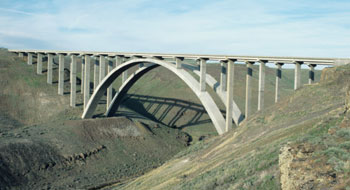
The current state of infrastructure in Canada and its future development compare favourably with the rest of the world.
An expert panel at the recent EuroMoney Canada Forum painted a rather rosy picture of what Canada’s current infrastructure situation. There were, of course, comparisons drawn between the infrastructure financing in Canada and in the U.S. and indeed others parts of the world.
Canada uses a unique blend of private financing, which incorporates the European model based on builders raising capital and delivering, and the Australian model led by financiers who raise capital and subcontract construction and operating components to companies with expertise in the area.
“Canada has a lot to teach the rest of the world with respect to infrastructure financing and development, and we shouldn’t forget that,” said Simon Chapman, executive vice-president, infrastructure development, with Carillion Canada.
One of the areas where Canada has done particularly well has been bank financing, says Cliff Inskip, managing director, head of infrastructure and project finance, debt capital markets, CIBC.
“Canada is ahead of many other countries [in] the breadth of its institutional market and the ability to have a natural source of long-term financing, unlike many other jurisdictions which have relied on the banking market,” said Inskip.
The panel of experts agreed there’s a significant infrastructure need in Canada at the federal, provincial and municipal levels.
“The advantage of having three levels of government is it promotes innovation,” said John McBride, CEO of PPP Canada. “We have seen some provinces take leadership in pursuing public-private partnerships (PPP or P3) models; there is an advantage in terms of seeing innovation at different sub-national governments.”
While many people have been looking at the U.S. as being a massive infrastructure market for the last five or six years, just north of the border Canada has quietly been doing a number of deals.
“In the U.S. the procurement is much more politicized than you find in Canada,” he said. “It’s not just that we have a federal-provincial split, it’s simply [the function of] the UK-style parliamentary democracy which allows Canada and Australia to benefit, whereas the U.S. market has yet to gain traction.”
The statistics speak for themselves. Over half of the total volume of P3s in North America were done in Canada in 2010, says McBride.
Public-private partnerships have risen in popularity in Canada in recent years as the result of governments seeking new and more effective ways of coping with growing infrastructure needs. The Canadian P3 sector, fairly modest in size in its current form, is attracting considerable interest from governments and investors alike and is expected to grow substantially as P3 activity ramps up.
There are, however, many projects that are not just P3. “There are a lot of power projects that need to be done [and are being] proceeded with, and there are other sectors,” said Inskip. “Canada has had a pretty consistent flow of projects over the last few years.”
It is a healthy model and we’re seeing a lot of foreign companies into the Canadian market, he added. Part of that may be attributed to tight fiscal situations that are driving governments to take look at different ways to finance infrastructure to get more bang for their infrastructure buck.
“It’s driving them to think of private finance type solutions,” said McBride. “And the fact that there is this incremental billion dollars worth of projects that are going to come in through a targeted P3 fund should help to sustain and stimulate deal flow in the future.”
PPP Canada is targeting $1.25 billion dollars worth of projects a year through PPP Canada Fund. “We’re particularly focused on building and deepening the markets,” said McBride. “So we are particularly targeting projects from jurisdictions that haven’t done P3 before [and] in sectors where they haven’t been done before, so we can broaden the market.”
The billion dollar fund will add incrementally to the market in a way that will broaden the number of participants and approaches, he added.
One of the by-products of the recent financial crisis within Canada was a renewed interest in government spending on infrastructure. And it’s thanks to tools such as PPP Canada Fund there is now growing federal, provincial and municipal awareness of the benefits of infrastructure procurement with the help of private capital.
